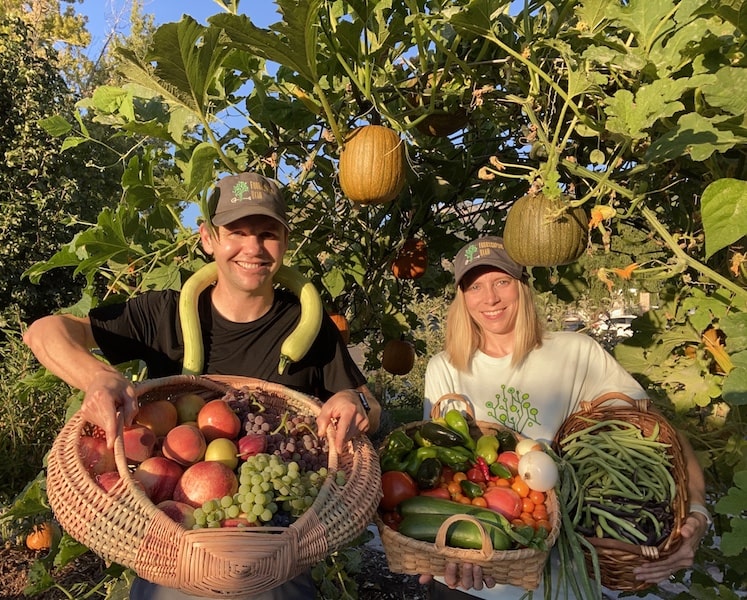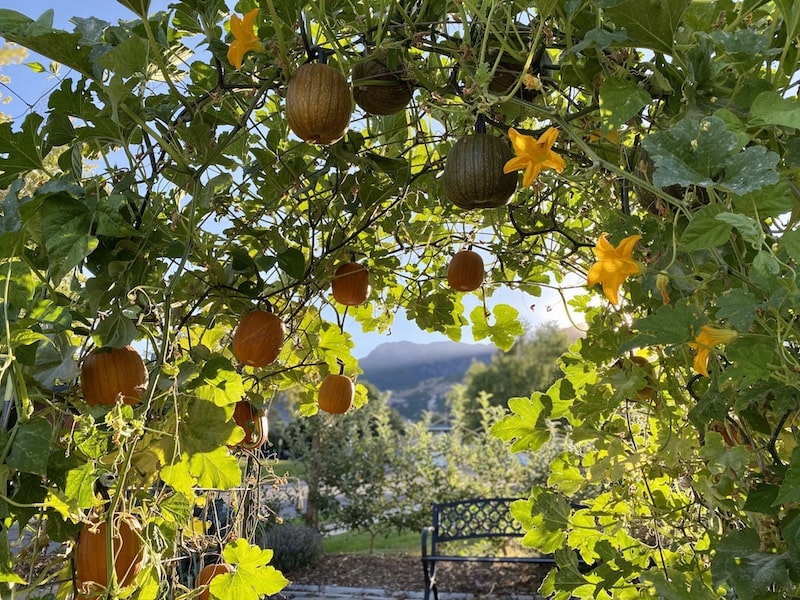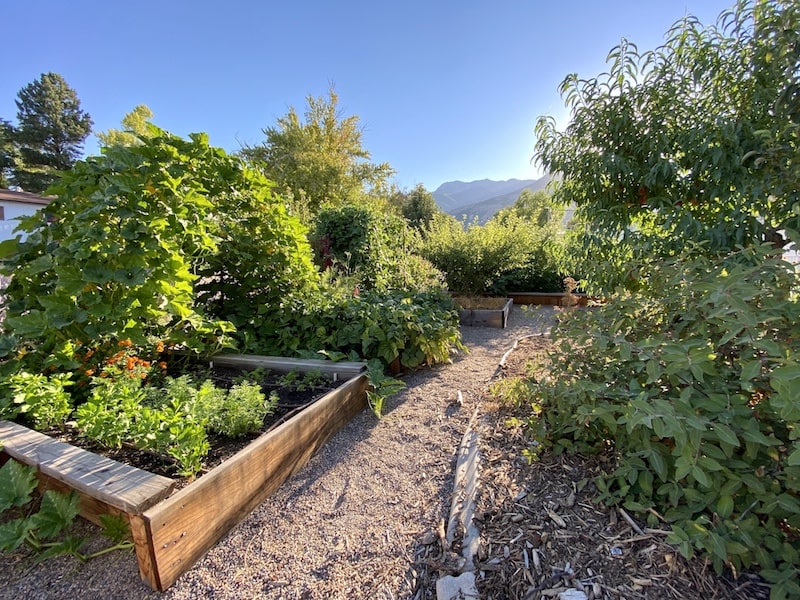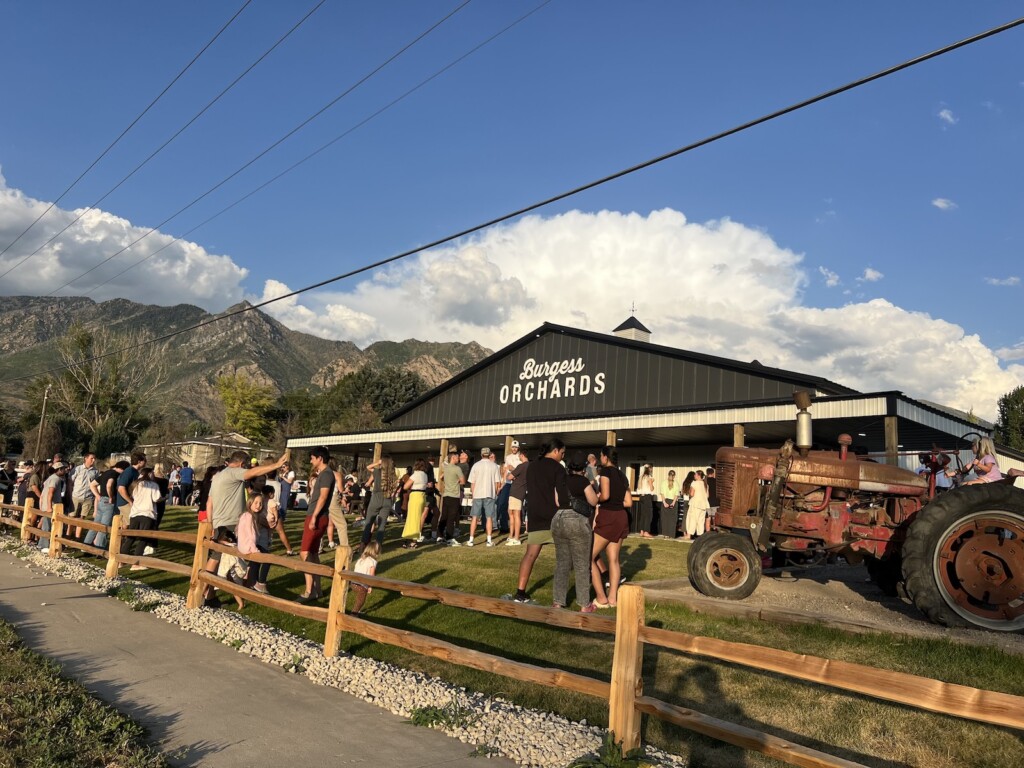
Last year, John and Holly Trimble grew 1,200 pounds of fruits, vegetables and nuts on the quarter-acre lot their house sits on in Ogden — enough so that their family of four only had to buy one bag of carrots the entire season.
With more than 30 fruit and nut trees, garden beds and space-saving techniques like arbors heaped with squash and other climbing plants, the Trimble’s front and back yards are a shining example of the “foodscaping” movement they are working to spread through their nonprofit organization.
Foodscaping Utah formed in 2018 with the goal of helping other Ogden homeowners transform their lawns and other underutilized spaces into abundant edible gardens. But the journey for the Trimbles began back at a small community plot at an apartment complex where John, who’d never enjoyed the taste of fresh vegetables, and Holly grew their very first garden. After that first taste of a homegrown tomato, they never looked back.
After moving to Ogden and purchasing a home, John became a Master Gardener through the USU Extension program. The Trimbles spent the next eight years overhauling their outdoor spaces with a diverse array of edible plants and pollinators — and now they help others do the same.

Foodscaping puts growing food on a property front and center. Residents who live in or near Ogden can apply to have their own yards foodscaped with the help of volunteers from Foodscaping Utah through the nonprofit’s website. They typically accept about six applicants a year.
“We try to determine who would keep their foodscape going and who really needs the help to do it,” says Holly. “First, John or one of the other Master Gardeners goes over to their house to do a consultation, draw up the plan and tell them what to buy. Then we have volunteers come out on a Saturday to build out the space and plant.”
To make the most of the space, they train fruit trees’ branches to grow along a trellis or wall — a technique called espalier — or prune for size control to allow for the trees to flourish on modest-sized lots. Trellises, arbors and pergolas add interest to the landscaping while providing the real estate for grapes, peas, cucumbers or pumpkins to grow.
“It’s two hours on a Saturday morning and you see this place transform from mostly grass or weeds to vegetable beds and fruit trees. We mulch the area and plant some perennials to make it look nice,” says John. “It becomes something that neighbors stop to look at and admire.”

Recipients of the volunteer-run foodscaping service are asked to donate 10 percent of their produce to Foodscaping Utah for farmers markets fundraisers and food bank donations, as well as pay it forward by volunteering at future foodscaping transformations.
“Foodscaping, in our minds, is a verb,” says Holly. “It’s transforming a space into something that’s productive and an ecosystem for beneficial insects and a teaching opportunity for your kids.”
For those outside the Ogden area looking for help or inspiration for transforming their own yards into foodscapes, the Trimbles regularly post content and videos on their Facebook, Instagram and YouTube channel.
MORE STORIES ABOUT BACKYARD GARDENING:
Urban Homesteading: Divest from Wall Street, Invest in Local Food
Three Nontraditional Home Gardens in Salt Lake City
How to Dramatically Improve Your Garden Soil with Inexpensive Cover Crops
Transforming Unused Space into Urban Gardens
CSAs to the Covid Rescue: The newest growing reasons for healthier diets
Subscribe to Utah Stories weekly newsletter and get our stories directly to your inbox





